Chamomile jelly is perfect on biscuits and scones, and it’s just another way to enjoy this tea-time favorite from the herb garden.
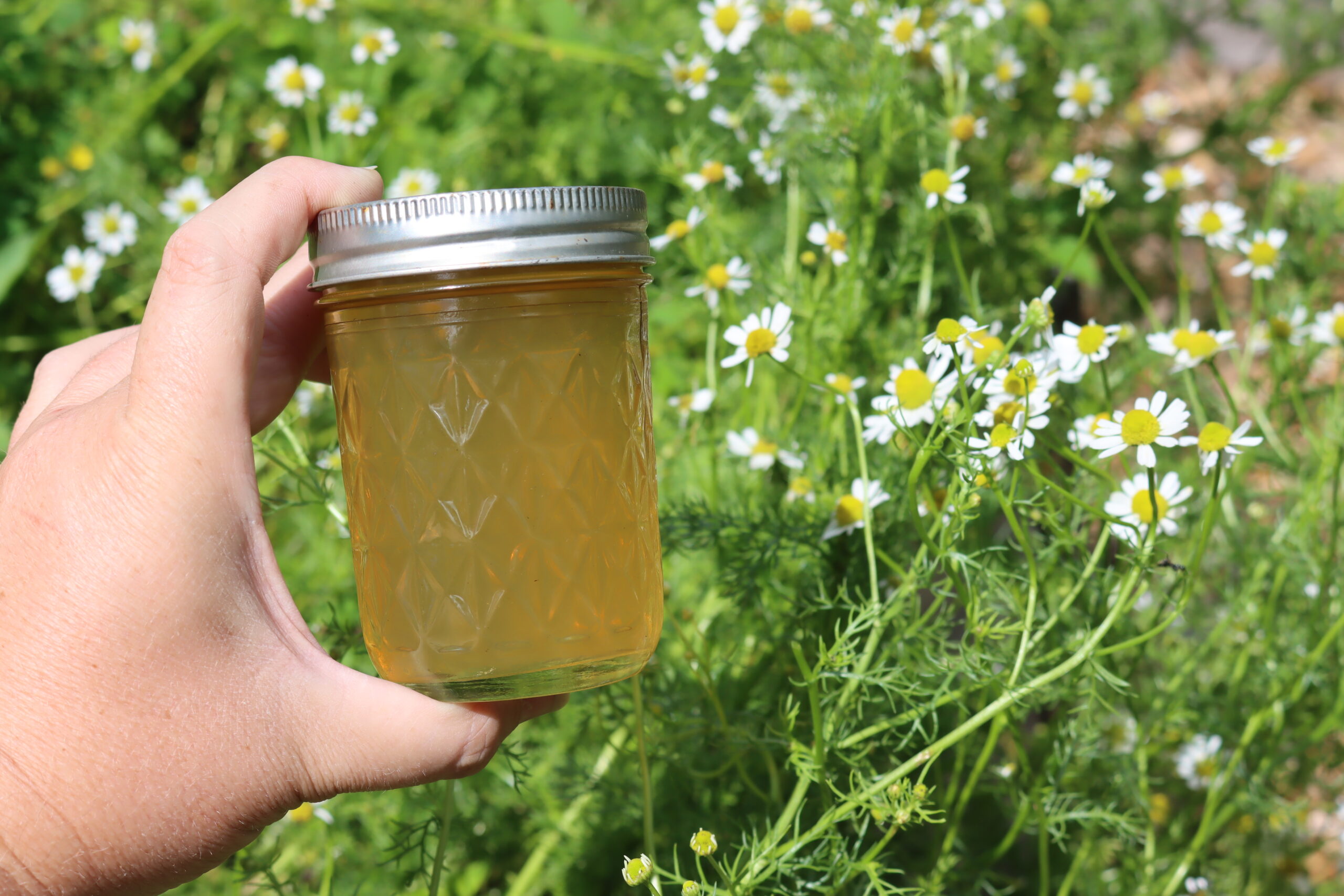
Chamomile is usually associated with herbal tea, but this fragrant herb is wonderful in all manner of recipes, including a homemade chamomile jelly.
I particularly love this sunny floral jelly on biscuits and scones, where the sweet floral flavor compliments the buttery texture of the baked good. This jelly also makes wonderful jelly thumbprint cookies, too!
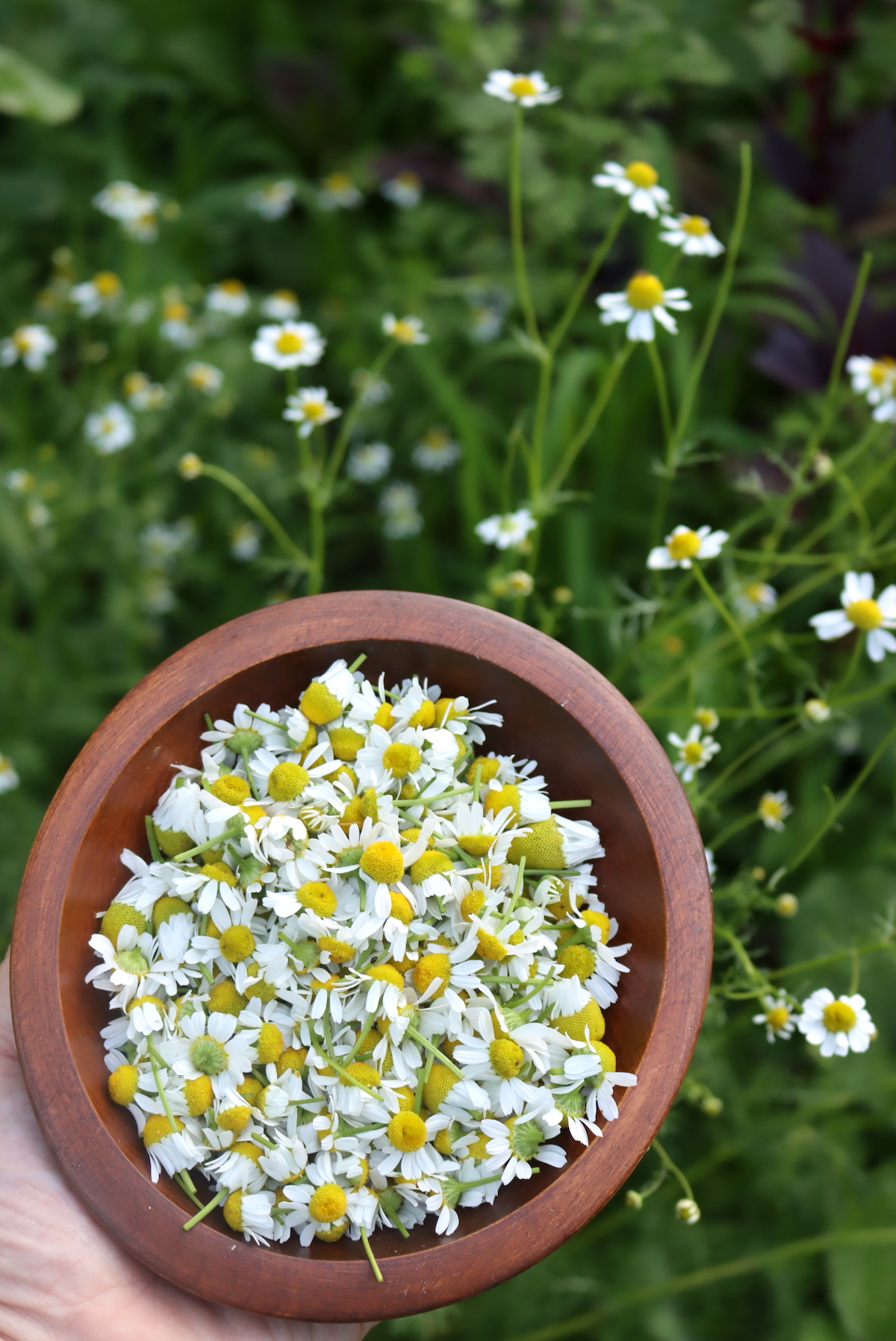
What does Chamomile Jelly Taste Like?
Many floral jellies have somewhat cryptic flavors that are a bit unexpected. Pansy jelly, for example, tastes like fresh spring berries. Forsythia jelly tastes an awful lot like sweet summer peaches.
The sweet floral flavor of chamomile, though, is unmistakable. Chamomile jelly doesn’t taste like anything else, just concentrated aromatic comfort with a sweet sunny side.
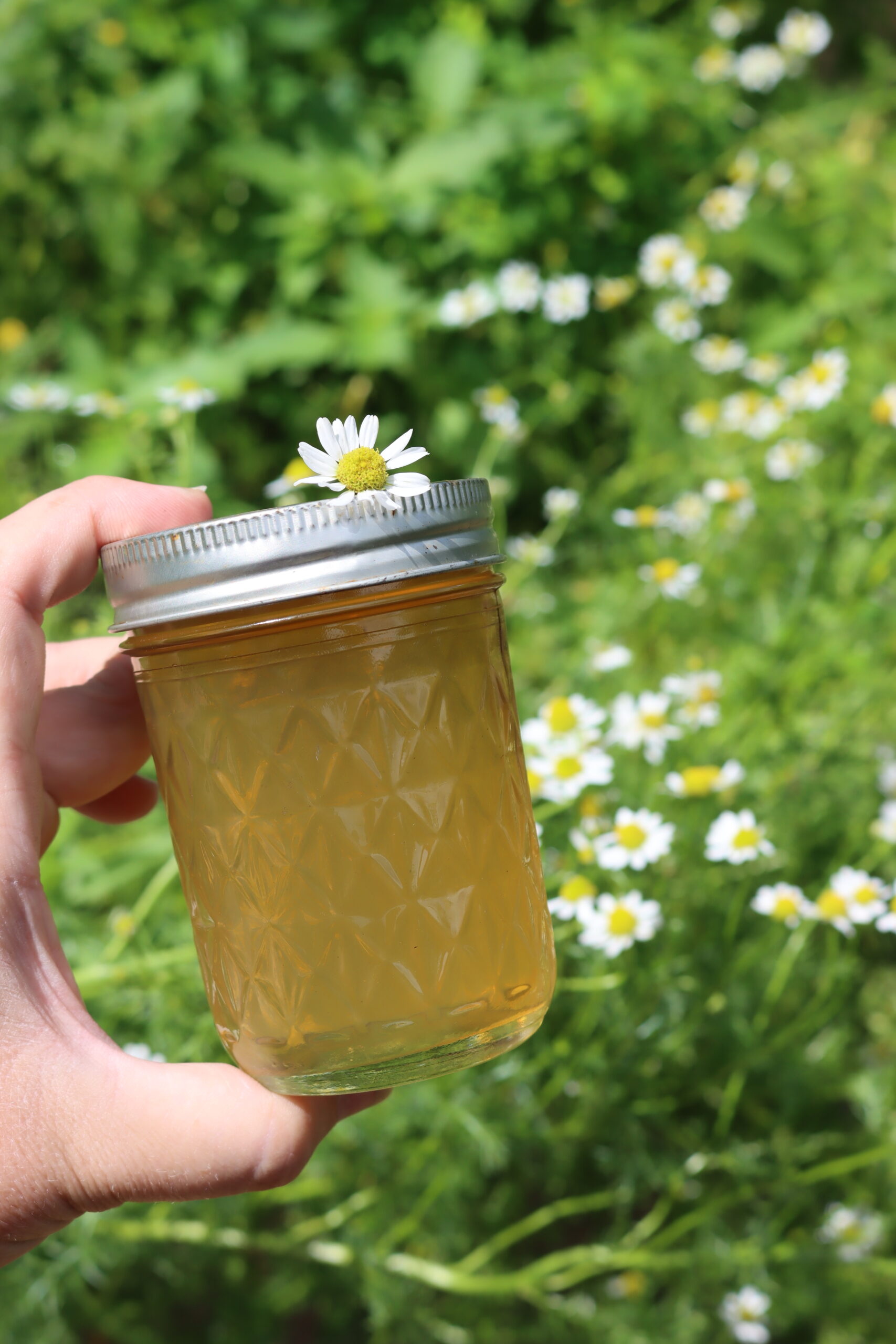
Harvesting Chamomile For Flower Jelly
If you’re harvesting fresh chamomile, choose blososms that are fully developed, but still have their petals. As the blossoms lose their petals, they also start to lose their wonderful flavor.
You can also use dried herbal tea in place of fresh chamomile in this recipe. In that case, you’d want to use about 2 to 3x as much as you’d normally use for a cup of chamomile tea, so that the flavor really comes through in the finished batch.
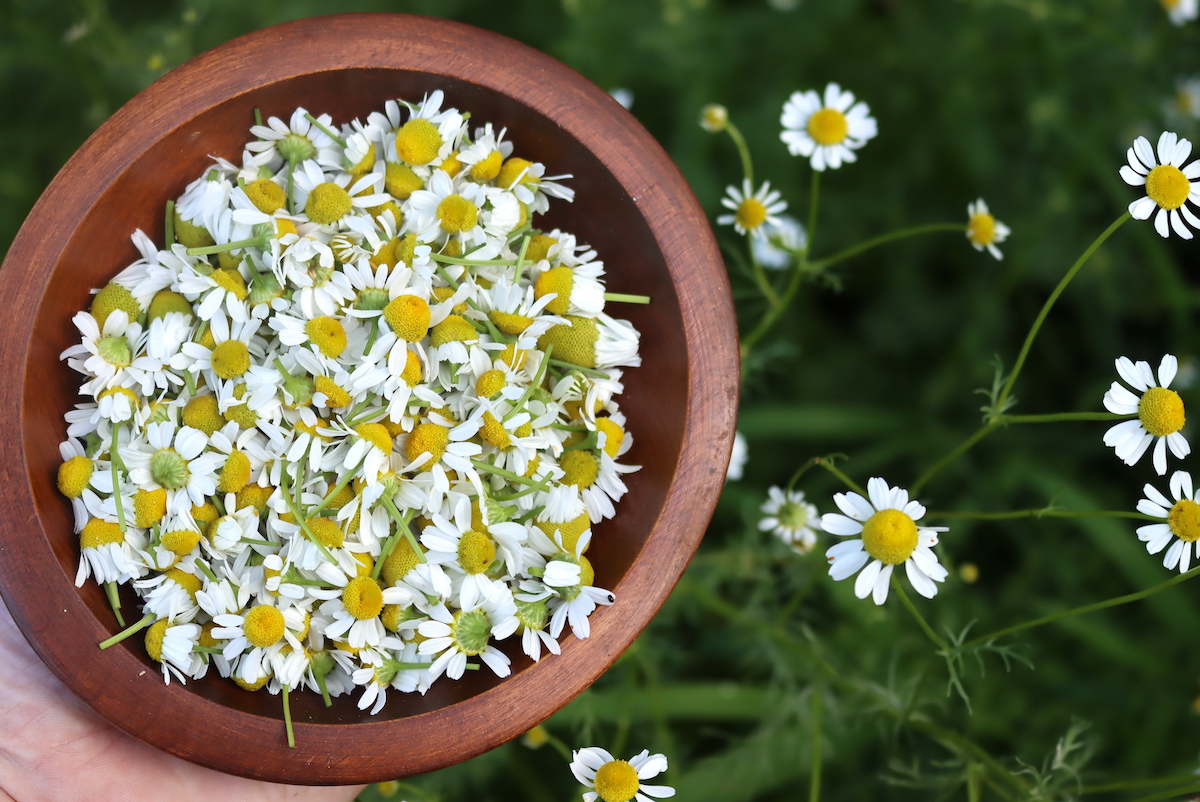
Ingredients for Chamomile Jelly
To make a flower jelly from chamomile flowers, you’ll need freshly harvested blooms (or dried tea), plus water, sugar, pectin, and a bit of lemon juice.
For a 4 to 5 jar batch (8 oz each), you’ll need the following:
- 1 to 2 cups fresh chamomile blossoms (or 1/2 cup dried chamomile)
- 4 cups water
- 2 tbsp lemon juice (or ½ tsp citric acid)
- 1 to 4 cups sugar *see note
- 1 box (1.75 oz) pectin (Regular or Low Sugar)
The actual amount of chamomile to use will depend on your personal tastes, and the chamomile in question, as some is a long stronger tasting than others.
I’d suggest brewing a batch with about twice as much as you’d normally use for herbal tea, as it takes a bit more to get the flavor to come through in chamomile jelly.
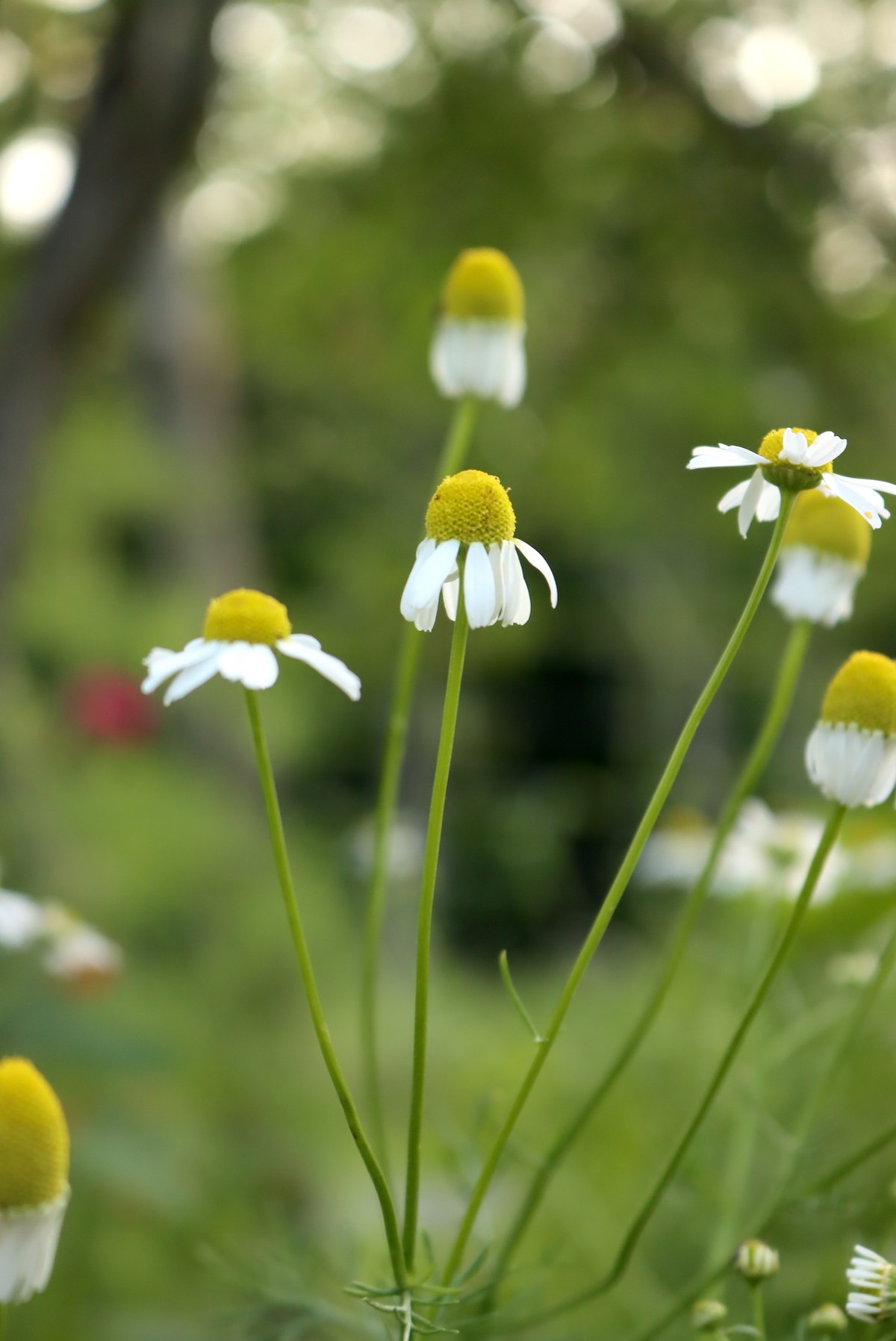
The lemon juice helps balance the flavor of the sugar, adding a bit of tart contrast to bring out the flavor of the flowers. It also lowers the pH, which helps the pectin set, and also preserves the jelly and makes it safe for canning.
Even if you’re not canning the jelly, you do need lemon juice. If you want a more neutral flavor instead, you can use citric acid powder (dissolved in a bit of water).
Citric acid granules are much stronger than citrus juice, and they’re used at a rate of 1/4 teaspoon of citric acid in place of each Tablespoon of lemon juice (or lime juice) in a recipe.
This recipe has 2 Tablespoons of lemon juice, so you’d need 1/2 teaspoon of citric acid per batch.
For pectin, I generally use sure jell or sure jell low sugar pectin, as they’re really dependable and result in the best texture in my opinion. (I’ve tried just about every type of pectin on the market.)
For regular sure jell pectin, you’ll need to add a minimum of 4 cups of sugar because it’ll only jell with a 1:1 liquid to sugar ratio. Sure jell low sugar will gel with any amount of sugar, and you can use as little as 1/2 cup for a barely sweet jelly. I’d suggest using 1 to 2 cups for a lower-sugar recipe that’s still sweet enough.
(Sure jell low sugar can also be used with full sugar recipes, so that’s what I usually keep on my shelf because it works great regardless of the sugar you choose.)
If you have Ball Flex Batch Pectin, you’ll need 6 Tbsp. (which is equal to a 1.75 oz box of other types of pectin). That’s true for their regular and low-sugar canisters.
The recipe card below also has instructions for liquid pectin, which requires astronomical amounts of sugar (7 cups sugar to 4 cups liquid). I don’t use it, but some people prefer that type of pectin, so I’ve included it just in case.
How to Make Chamomile Jelly
Making jelly from chamomile flowers isn’t all that different from making any type of floral jelly, except that chamomile flowers tend to have quite a bit more flavor than your average edible flower. Most flowers, you use 2 to 4 cups of blossoms for a batch, but with chamomile you only want 1 to 2 cups of fresh or about 1/2 cup dried.
When making tea with fresh blossoms, I like to pick them directly into a quart jar because it’s just the right size for the next step, which is steeping in 4 cups of boiling water.
Steep the chamomile for about 10 to 15 minutes, and then strain.
Pour the chamomile tea into a jelly pot and add 2 tablespoons of lemon juice. (The lemon juice balances the sweetness from the sugar, and also makes the jelly safe for canning. I’d recommend it even if you’re not canning your jelly.) Next, bring the tea to a boil.
Add in one box of powdered pectin. (I use sure jel generally, but any standard 1.75 oz box of pectin will work.)
Stir in the pectin until it’s completely dissolved and boil for 1 full minute.
Next, add the sugar. Standard pectin requires a 1:1 ratio of sugar to liquid to gel. Since we’re working with 4 cups of chamomile tea, you’ll need 4 cups of sugar.
If you use a “low sugar” pectin, such as Sure Jel low sugar, then you can use as little sugar as you’d like. For a very low sugar jelly, you can use as little as 1/2 to 1 cup sugar to 4 cups chamomile tea.
After you’ve added the sugar, stir to completely dissolve and return the mixture to a hard boil on the stove for 1 minute.
After 1 minute, remove the mixture from the heat and ladle it into prepared jars.
Canning Chamomile Jelly
Canning this floral jelly is optional, and you can simply store it in the refrigerator, where it’ll last several weeks. Freezing is also an option, provided you’re using freezer-safe jars.
Personally, I like the simplicity of processing the jars in a water bath canner because it allows me to store the jelly right on the pantry shelf year-round. I can have the sweet herbal flavor of chamoile jelly any time of year, and it’s not taking up refrigerator or freezer space in the meantime.
To can this jelly, be sure you’ve used lemon juice, which lowers the pH of the mixture enough for canning.
Prepare a water bath canner, canning jars, and lids before you start making the jelly. Make the jelly as otherwise, but then ladle into prepared canning jars leaving 1/4 inch headspace.
Seal the jars with 2 part canning lids and then process for 10 minutes in a water bath canner (15 minutes if above 6,000 feet in elevation).
Once the canning time is complete, remove the jars to cool on a towel on the counter. Properly canned and sealed jars will maintain quality on the pantry shelf for 12-18 months. Refrigerate after opening.
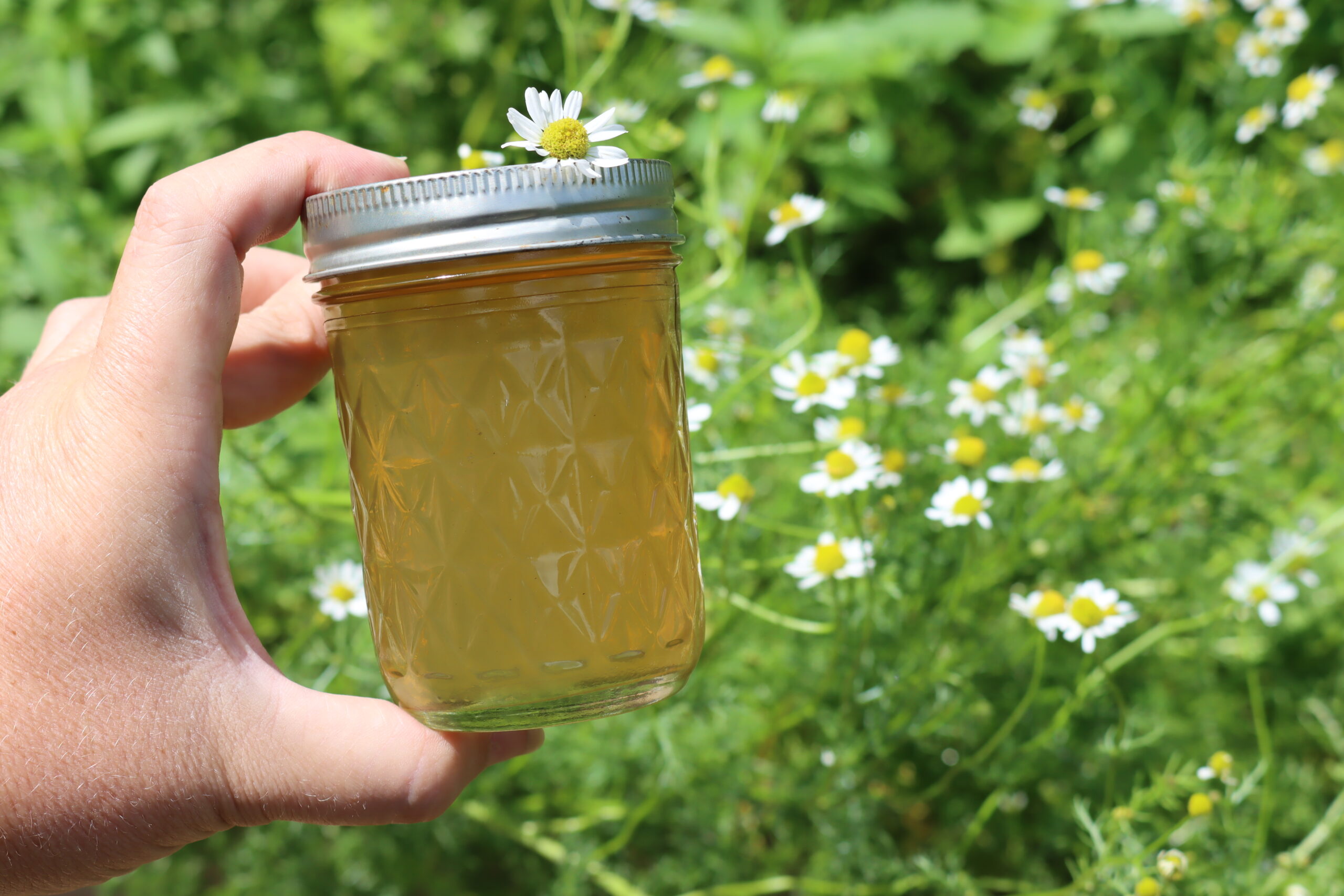
Chamomile Jelly Variations
Ball canning has a recipe for a chamomile strawberry jelly, where they simply replace the water used in tea with strawberry juice. You’ll first need to extract the strawberry juice as you would when making jelly (with a jelly bag) and then infuse chamomile leaves into the warm juice before proceeding with the jelly recipe.
Chamomile Recipes
Looking for more fun ways to use chamomile?
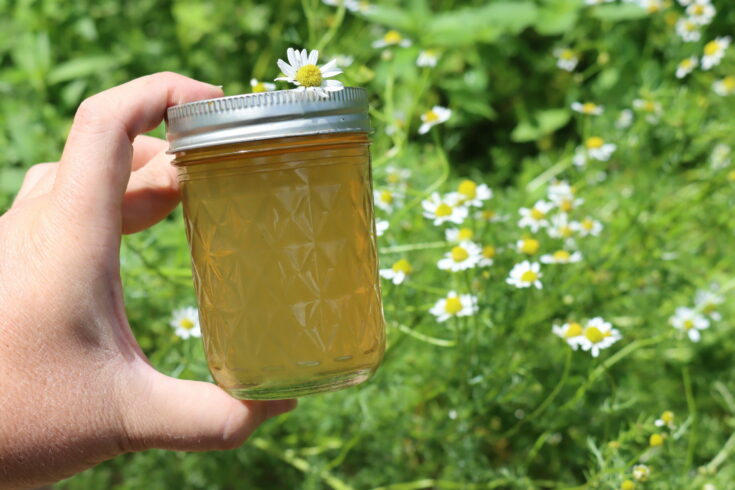
Chamomile Jelly
Flower jellies capture the flavor of fresh blossoms in a sweet floral jelly.
Ingredients
- 1 to 2 cups fresh chamomile blossoms (or 1/2 cup dried)
- 4 cups water
- 2 tbsp lemon juice
- 1 to 4 cups sugar *see note
- 1 box (1.75 oz) pectin (Regular or Low Sugar)
Instructions
- Place the chamomile, fresh or dried, into a heatproof container.
- Pour 4 cups boiling water over the top of the flower blossoms and allow the tea to infuse for about 10 to 15 minutes.
- Strain the floral tea into a saucepan or jam pot. Add the lemon juice, which will help bring out the best color in the jelly, but it's also required to balance the sugar in the recipe and help the pectin set. Beyond that, it adds acidity to help preserve the jelly, so don't skip the lemon!
- Bring the mixture to a boil and add the powdered pectin, stirring to dissolve. Allow the mixture to boil for 1 minute before adding sugar. (Note: Do not add the sugar at the same time as the pectin, or before the pectin, or the jell will not set.)
- Add the sugar, stirring to dissolve (See notes on quantity). Bring the mixture back to a full boil for 1 minute before ladling into jelly jars leaving 1/4 inch headspace.
- If canning, process in a water bath canner for 10 minutes. Otherwise, allow the jars to cool completely on the counter before storing in the refrigerator (for up to a month) or the freezer for up to 6 months.
Notes
Full Sugar or Low Sugar
If using standard pectin, you must use a 1:1 ratio of liquid to sugar. That means for 4 cups flower blossom tea you'd need a minimum of 4 cups sugar to get the jelly to set. That results in a very sweet "old-fashioned" jelly. To reduce the sugar, simply use low-sugar pectin instead and then make the jelly as instructed but using less sugar. I suggest sure jel low sugar, which is very dependable.
Lowering sugar will also lower yield, and the yield of 5 half-pints is for a full sugar recipe.
If using Pomona's Universal Pectin, the instructions are different, as that is a 2-part low sugar pectin. Follow the instructions provided in the Pomona's box for mint jelly.
If using liquid pectin, the order of operations is different (pectin is added last, sugar first). Liquid pectin also requires a lot more sugar to set (7 cups sugar to 4 cups liquid). I don't recommend liquid pectin because of the high sugar levels required for set, but it will work if that's your preference.
If you have Ball Flex Batch Pectin, you’ll need 6 Tbsp. (which is equal to a 1.75 oz box of other types of pectin). That’s true for their regular and low-sugar canisters.
Flower Jelly Recipes
Stock your pantry with these tasty floral jellies!
Herbal Jellies
Flowers aren’t the only plants in the garden that make wonderful jellies!
- Savory Herbal Jelly
- Lemon Balm Jelly
- Calendula Jelly (Marigold Jelly)
- Mint Jelly (coming soon)
- Tulsi Jelly (coming soon)
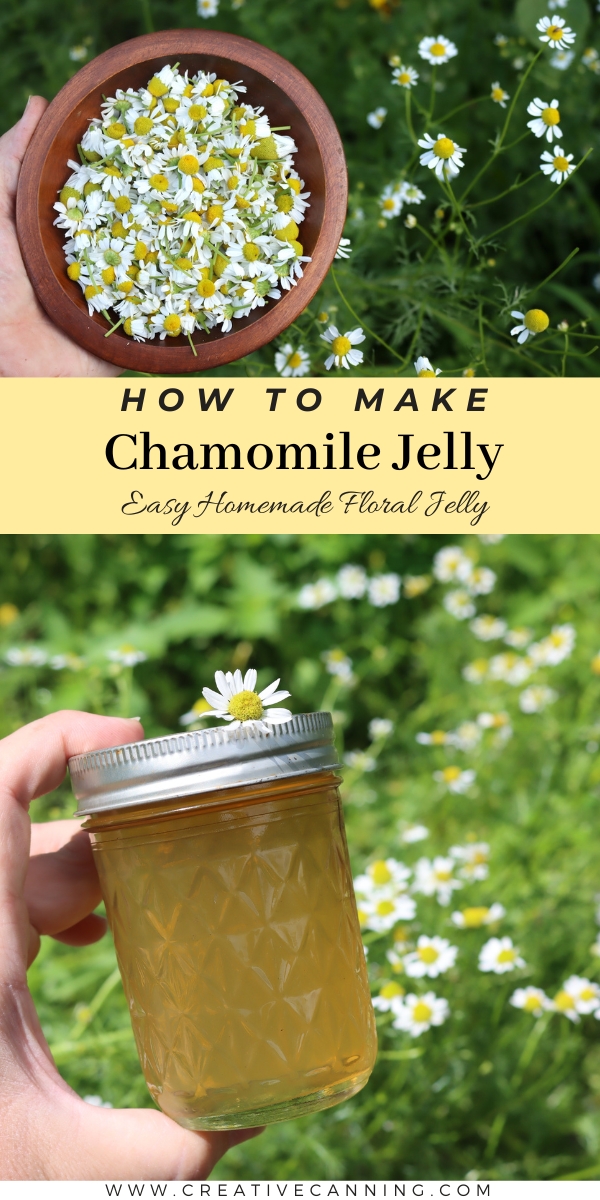
Leave a Reply